Graphics Design
Why Retro Design is the Perfect Blend of Nostalgia and Innovation
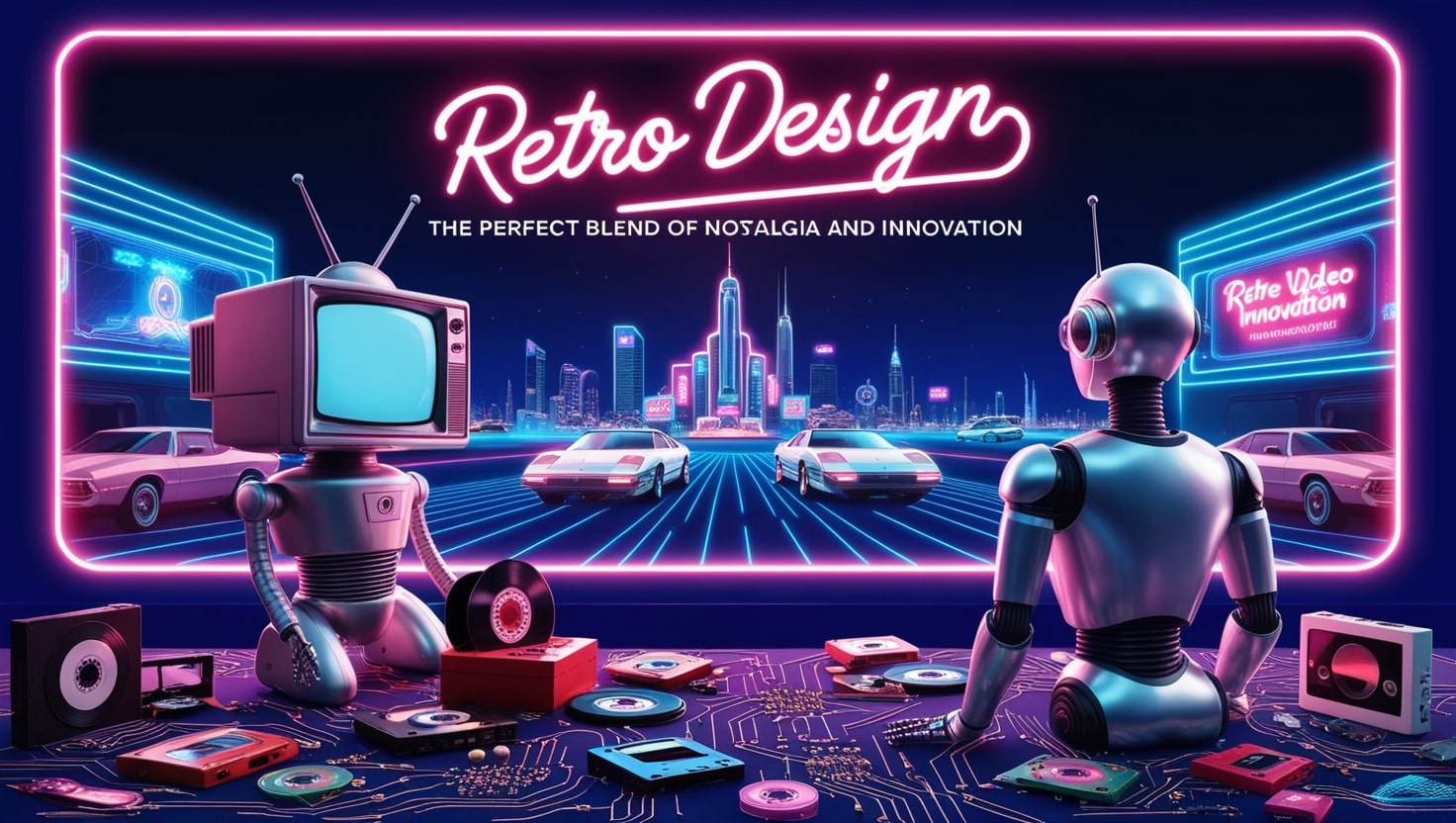
Why Retro Design is the Perfect Blend of Nostalgia and Innovation
Retro Design art deco has been a dream for many over the years because it creats an interesting perspective of the past and present. It can be seen in fashion, home décor, product design, or in the tech world, the idea of referencing older designs, even the formal constraints, and integrating them into new products is far from deceased. But what made retro design so popular? Why does this blend of the old and new still light up our screens and pull at heartstrings, when one is always on the lookout for the new? So in this article we will discuss what is meant by Retro Design, why it exists, and why it is such a good mixture of the old and new.
Outline of the Article
- Introduction
- What is Retro Design?
Defining Retro Design
Legendary Time Periods which Define Retro Style
- The Psychology Behind Nostalgia in Retro Design
Why We Love Looking Back
Why Dunks are Considered to have an Emotional Appeal of nostalgia.
- Retro Design in Fashion
Refurbished Fashion Styles Based on the Old Vintage Fashion
Iconic Retro-Inspired Brands
- Retro Design in Home Decor
Mid-Century Modern: Interior Design Themes that stands the test of Time
Analysis of the Elements of Color and Texture in Retro Home Decor
- Retro Design in Product Design
High tech devices with low-tech looks
Vinyl Records and Polaroid Camera
- The Reto Concept in Graphic Design and Branding
Using Retro Type Designs, Logos, and Patterns
How Brand Unlock The Impact of Nostalgic Marketing
- Nostalgic Design and Function of Innovation
Combining Tradition with Technology: The Appeal of Using Vintage Styles
How Popular Design Themes are Applied
- Sustainability and Retro Design
The Sustainability Feature of Resurrecting Archive Silhouettes
Upcycling and Retro Look
- Remembering Why Retro Design is Not Just the Case of a Trend
Longevity and Timelessness
The Aspect of Culture Concerning the Retro
- Pitfalls of Using Retro Design
Avoiding Over-Saturation
Balancing Nostalgia with Modern Expectations
- Examples of Successful Retro Designs
Fashion: Converse Chuck Taylors
Technology: Nokia 3310 Relaunch
Home Decor: Eames Lounge Chair
- Conclusion
- FAQs
Introduction
This type of design is not a trend, it is cultural revolution that adduces the reminiscence of the past and present in modernity. Your old school sneakers may be your favorite pair of kicks, or a beautifully restored record player that can now connect to Bluetooth. In this article let me explain why retro design is exactly the best combination of the past and the future and why people still love it.
What is Retro Design?

Defining Retro Design
It means a style that deliberately looks back to when some trends, looks, and cultural artifacts that were popular before are revived. It covers all aspects of life, fashion, graphic, etc where objects from earlier periods namely between the 1920s and the 1980s and recycled or reborn, to fit today’s world.
Legendary Time Periods which Define Retro Style
The glamorous 50s, sexual revolution 70s and the eclectic 80s have showcased most of the retro style gen. Pin-up art, artefacts from the disco era such as the disco ball, all have been kept active in the modern design world by recycling.
The Psychology Behind Nostalgia in Retro Design
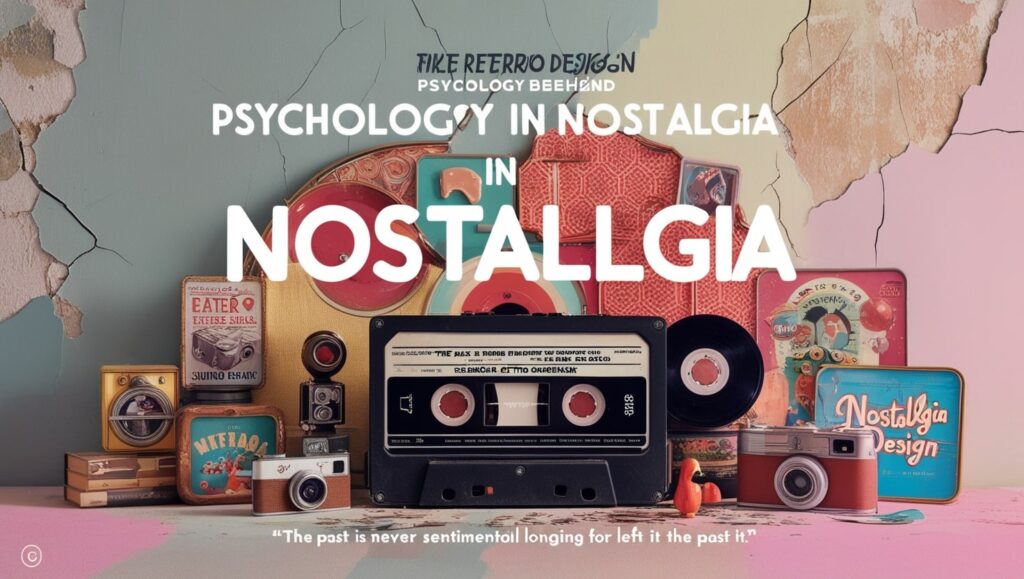
Why We Love Looking Back
Nostalgia is a weapon in the psychological warfare. It ties us to a period of which we were part and parcel—or a period which we have never witnessed but wish we were part of. Given the constant exacerbation of globalization and briefing of the world around us, retro design is something that comforts the eyes, with its desire to make a trip back to the good old days, at least on the graphic level.
Why Dunks are Considered to have an Emotional Appeal of nostalgia.
So when we speak of Retro design, feelings are appealed to, even if it nostalgically brought up that design is associated with the good times such as through the Retro looking Coke bottle or a video game arcade cabinet from the 1980s. All these elements create a sense of reminiscence, both, individual and shared, which leads, not just, to functional satisfaction, but also sentimental involvement.
Retro Design in Fashion
Refurbished Fashion Styles Based on the Old Vintage Fashion

Fashion may well be one of the areas most affected by the concept of retro-design. Starting from bell-bottom jeans in fashion now to platform shoes seen on most fashion shows, retro clothing is back. The key is often the modern twist: The new takes over new forms but in old aesthetics, remade with contemporary materials, technology or cuts.
Iconic Retro-Inspired Brands
One can see that virtually every major brand, including Levi’s, Converse, and Ray-Ban, has only benefited from the period approach. They mix the timeless look of some of their products with contemporary changes to cater for today’s market. The Converse Chuck Taylors: once a basketball shoe from the seventies, today’s society’s indispensable footwear.
Retro Design in Home Decor
Mid-Century Modern: Interior Design Themes that stands the test of Time
When it comes to nostalgic home decoration, however, nothing stands taller, or has a more passionate following than Mid-Century Modern design. This postwar style which has its roots in the early 1950s is associated with fine lines, flowing shapes and little decoration and its examples can still be described as luxurious today.
Analysis of the Elements of Color and Texture in Retro Home Decor
Strong hues such as mustard yellow, teal, avocado green hit the center of target among bespoke patterns of the typical American home décor and deep textiles like velvet, tweed, wooden panels. All these features introduce individuality and homely atmosphere into the interiors that can be perceived as quite formal in context of the modern architecture.
Retro Design in Product Design
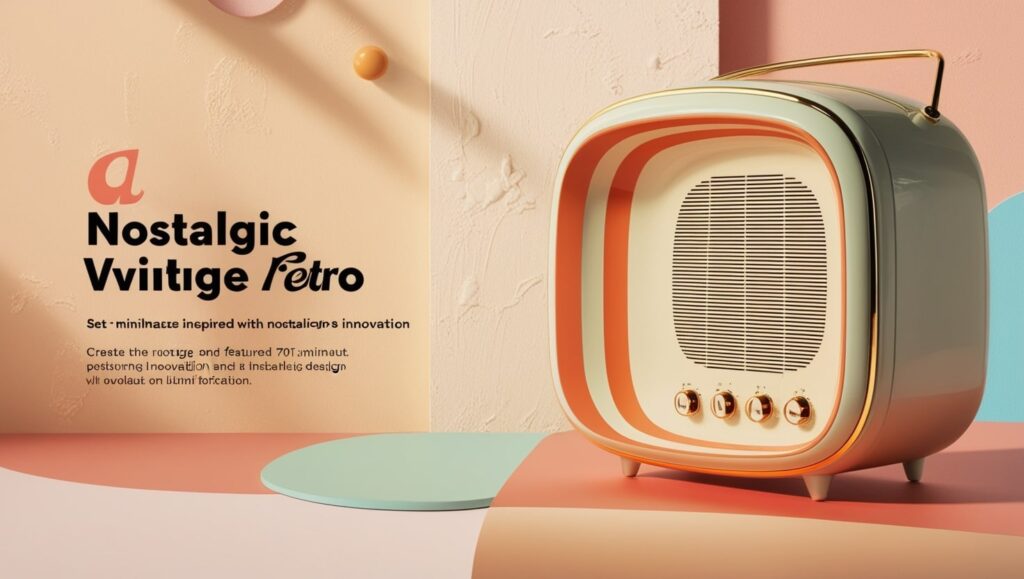
High tech devices with low-tech looks
However, the nostalgic mood doesn’t apply solely to clothing and interior – it reigns in product design as well. Consider the revival of vinyl records or soft ware styled game consoles. These products combine the nostalgia to look and feel of today technology to provide total satisfaction for the users’ emotions and their need to use a product.
Vinyl Records and Polaroid Camera
Vinyl records and Polaroid cameras are two shining examples of products that are vintage inspired in form and are currently enjoying a revival like no other. The actual papers of these music and photographs are easier to access in digital form, however these products of past provide haptic feedback which a lot of consumers cannot do without.
The Reto Concept in Graphic Design and Branding
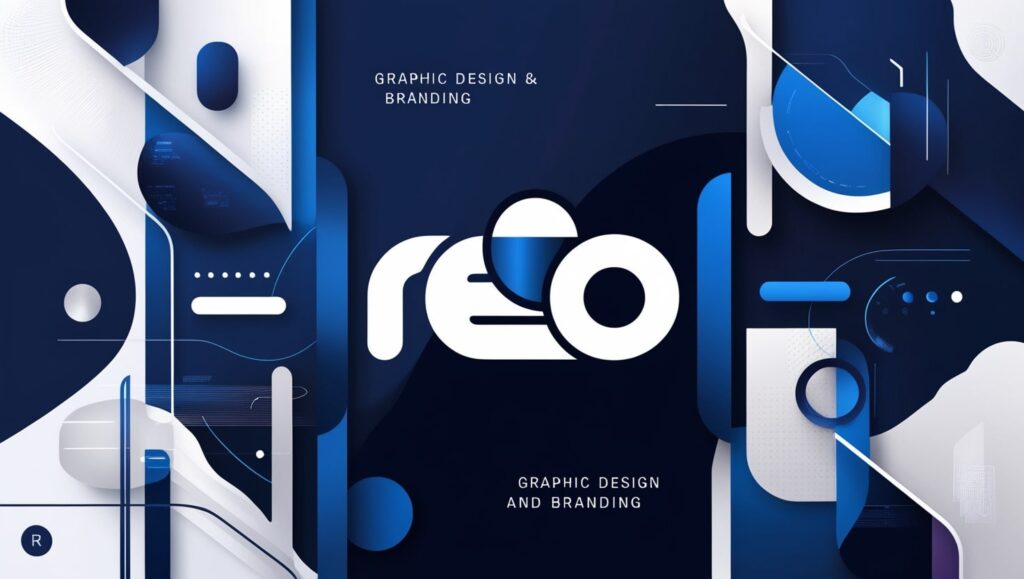
Using Retro Type Designs, Logos, and Patterns
In the sphere of branding most firms are seeking a niche by going for the retro trends. Fontage from the seventies, retro-style logos and fun references to the experience of youth culture remind the public that it is authentic.
How Brand Unlock The Impact of Nostalgic Marketing
Big beverage giants Pepsi and Coke, for instance, avail so-called ‘nostalgia’ packaging that creates a new avenue for the firms. From these illustrations, one can see that by temporarily going back to an older design, these firms not only rekindle memories of the past but also generate interest in their goods.
Nostalgic Design and Function of Innovation
Combining Tradition with Technology: The Appeal of Using Vintage Styles
As much as retro design can take inspiration directly from the past, it never dismisses what is achieved in the present. For instance, a radio that produces a vintage style may include interfaces that the original devices did not have such as Bluetooth interface or USB interfaces. This fusion of classic design with increased functionality allows retro design stay significant in the high-tech era.
How Popular Design Themes are Applied
It is therefore important to note that these pragmatic nostalgic devices are not relics of the past; they are not simply reissues of classic designs; they incorporate design advancements that render their antecedents marginal; they are better-engineered computational contrivances that elicit the aesthetics of the past but are built and designed to conform with futuristic standards. This way they’re not mere novelty items but utensils and gadgets that will remain useful for a reasonable amount of time.
Sustainability and Retro Design
The Sustainability Feature of Resurrecting Archive Silhouettes
They also said that retro design is more sustainable than fast-fashion or chasing the trends designs. We get to cut on the need to produce new products all the time this helps us save the environment and dilute further destruction of the environment.
Upcycling and Retro Look
Revival of old items of clothes and resusing them in a new way has been practiced in retro fashion by upcycling. Garments that were worn a few years ago are now redesigned with a contemporary look and people are playing their part in recycling othus preserving the retro style.
Remembering Why Retro Design is Not Just the Case of a Trend
Longevity and Timelessness
This mean’s however that unlike many trends, retro design seems to be sustainable as time progresses. It is timeless as it borrows the best of two eras: the old and the new. Starting from clothes and accessories up to the gadgets and gizmos retro design is a trend that will remain around for quite some time now.
The Aspect of Culture Concerning the Retro
It can also be added that retro design is also significant in culture. It gives the people an opportunity to look back at successes and enjoy some of the earlier fashion trends as well as continue living in the present. Such a connection with history helps to form a much-exalted perception of the present.
Pitfalls of Using Retro Design
Avoiding Over-Saturation
The first drawback for retro design is the tendency of over-popularization. However, when many brands or products, start using ‘retro’ experiences, it loses its peculiarity; there is nothing special or unique about it.
Balancing Nostalgia with Modern Expectations
Finding a right note to strike while making a product nostalgic and also giving client what he wants in the contemporary world is a major key. Although, everyone enjoys the use of such designs, people expect contemporary comfort, sustainability and presence of technology to be viewed and applied as well.
Successful Realisation of Retro Designs
Fashion: Why have Converse Chuck Taylors remained so popular today?
Technology: The newest version of the iconic Nokia 3310, which has both, nostalgia and new functions for today’s users.
Home Decor: The Eames Lounge Chair is one of the world’s most famous furniture designs – and continues to be popular in modern interiors.
Conclusion
Retro design is really a perfect blend of the old and the new, or as people like to say, vintage. It helps all of us satisfy our desire of nostalgia while at the same time providing practicality for the current generation’s products. Ranging from fashion to production designing and everything in between; retro design capability is the best of time and therefore is much more than mere.
It cannot be just a ‘fad’, implemented for a month or two as a result of being the newest ‘it’ thing—it’s a part of culture. At the same time, with the help of the desire which it touches and the need which it satisfies, retro design will remain fascinating and creative.
FAQs
- What is it about retro design that is popular today?
Retro design targets people’s feeling of longing to the good old days as well as compatibility with new technologies. This union can provide feelings and trustworthiness from which patrons feel they know and can turn to while satisfying modern demands.
- There are several eras that are most preferred for retro design but four of them are more common than the others.
Retro design is currently used in connection to design which is inspired by the period between nineteenth and twentieth century with emphasis on the 1920s to the 1980s, with more emphasis on the 1950s, 1960s, 1970s and the 1980s.
- Is retro design sustainable?
Yes, it is sometimes more sustainable, for example in clothing or furniture industries where objects are made based on old retro designs, and where is an opportunity to reuse already existing materials.
- What are some technologies that are mimicking the trends of the past?
Of course, some of them are the following: vinyl records; Polaroid cameras; retro phones with advanced facilities, such as the Nokia 3310.
- Retro design often a part of the marketing mix, but how does the concept really fit into it and how is it incorporated?
Marketing teams incorporate designs from the past for various logo designs, fonts, and packaging that can create such feelings relating to nostalgia.
Graphics Design
Creative Graphic Design Ideas for Small Business Owners

Creative Graphic Design Ideas for Small Business Owners
Creative graphic design ideas due to the rise of digital businesses, every entrepreneur now needs a visually appealing and professional brand image to thrive. You can use Creative Graphic Design Ideas to make your company stand out, be it just beginning or in the process of improving. Using images and design is useful for communication, storytelling and creating emotions in your audience.
Your brand’s strategy relies on graphic design to shape logos, packaging, social media and websites. Here, I will cover real-life and useful Creative Graphic Design Ideas suitable for small businesses to help shape your business look without spending all your advertising budget.
Here’s how Graphic Design is Important for Small Business Owners
It is wise to start by understanding why being creative in design plays a major role. A thoughtfully made design is able to:
- Develop a professional image for your business.
- Make the brand more recognizable.
- Help attract and keep customers.
- Clarify what your brand is about.
The risks are much bigger for small business owners. With very little money and lots of companies, your creative graphic design ideas needs to be efficient rather than extremely hard-working. Using creative design helps you keep up with bigger names and touch your audience in a personal way.
1. The foundation of brand identity is logos.
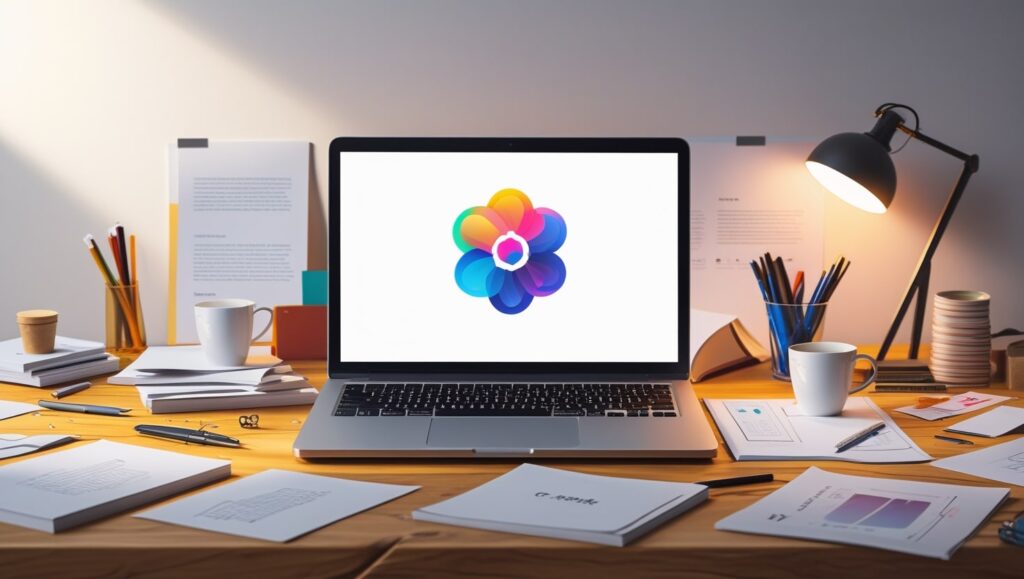
A main Creative Graphic Design Ideas for owners of small businesses is designing a distinctive logo. A logo is generally the first thing customers see when they see your brand. It needs to:
- Easy to recall but not meaningless.
- Proof of your corporate beliefs.
- Can be viewed on a number of media platforms.
You can make an effective logo without expensive help from a big agency. Many small business owners use Canva, Looka and Adobe Express for the templates they need to create unique designs.
2. A consistent brand image is shown on all the platforms the company uses.
Sticking to one brand style makes a strong idea for Creative graphic design ideas. Your brand’s palette of colors, type of text, icons and images must be the same everywhere.
Social networks
- Websites
- Packaging
- Having business cards
- Advertising content
Keeping your brand regular and the same helps your audience become familiar with it. This type of design is simple and affordable, so even businesses getting launched can use it.
3. Tell your stories using Infographics.
Small business owners frequently have to break down complex ideas or highlight what makes their business valuable. To present data in a way that people find interesting, infographics are some of the best Creative Graphic Design Ideas.
They suit these needs best:
- Evaluating products.
- Tutorials
- Researchers study statistics and case studies
Make your infographics look like a professional by using design tools such as Piktochart or Visme. Improving the graphics in educational materials improves your authority and holds your audience’s attention.
4. Standout Visual Design on Social Media
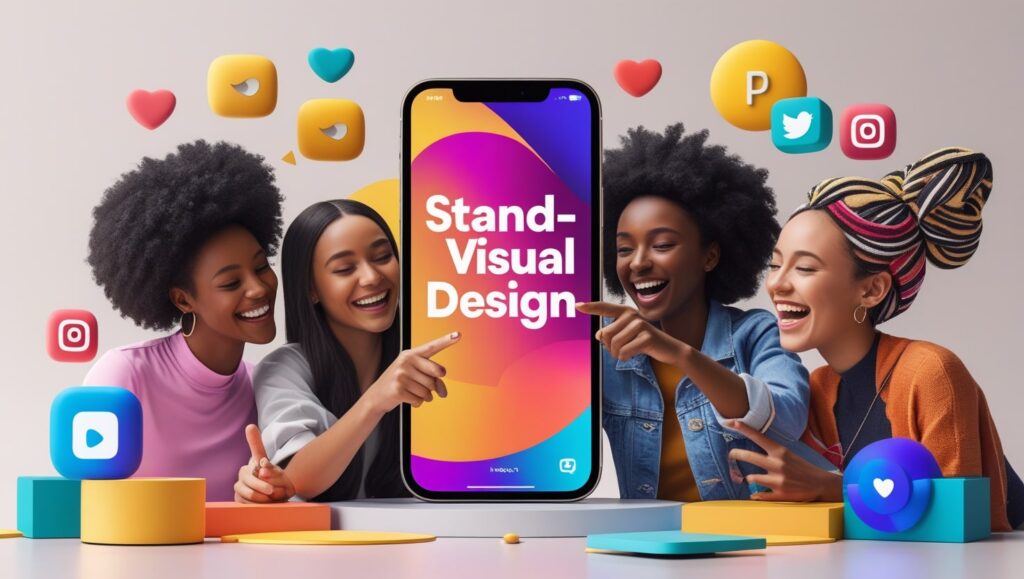
To be seen on social media, your profile should be different from a sea of competitors. Engaging and designed visuals are a great Creative Graphic Design Ideas for improving how users connect and your follower count. Designing is something that you can achieve:
- Telling a story with the same Instagram template.
- Posts that list relevant quotes from the brand.
- Posting banners to advertise sales or the start of a new product.
For social media posts, try using Canva or Crello which have templates that are adjusted for the different social networks. Such tools help you play around with various Creative Graphic Design Ideas in an easy and efficient manner.
5. Salespeople can use Professional Business Cards That Make a Statement
Even with all the digital options, business cards are still helpful. Good design on your business card helps others easily remember you. Some creative graphic design ideas for business cards that businesses might use are:
- Websites with a minimal look and big text.
- Shapes cut into paper by a die.
- QR codes that let you talk straight to the business.
Pick sharp colors and clear fonts so the design challenges users and looks creative. If you design your business card well, it can introduce your brand to others anywhere.
6. Distinct Packaging
For physical products, your packaging can display the character of your company. Small businesses usually pay less attention to packaging, but it is highly effective at affecting buyers’ decisions.
Consider:
- Biodegradable, marked wrapping paper.
- Labels and thank-you notes can be created just for the event.
- Script and swirly fonts to make everything unique.
The right packaging can encourage a buyer to become a regular loyal customer. Graphic design concepts for packaging raise the perception of your products’ value.
7. Website Graphics and Banners
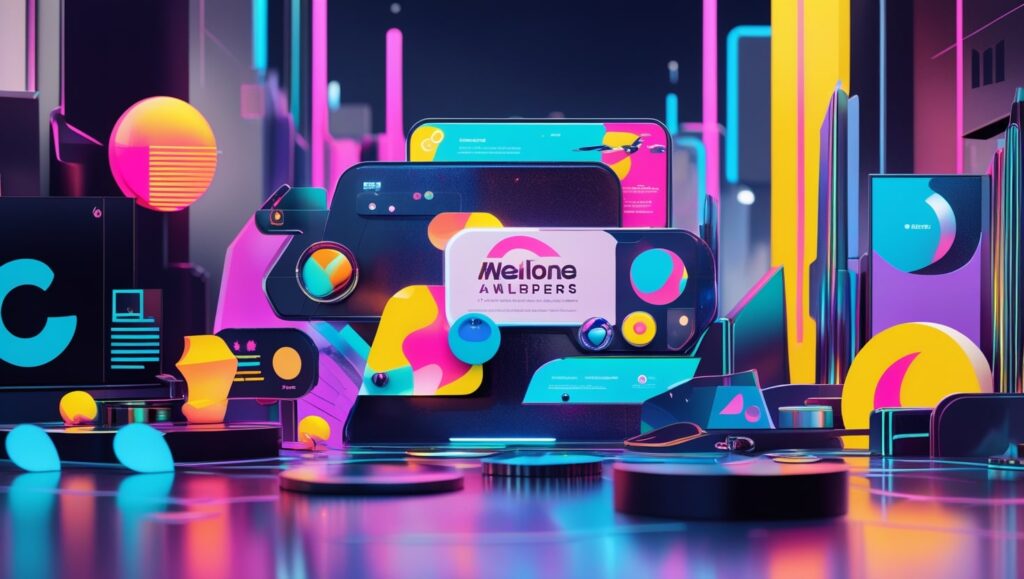
A website that looks nice helps gain credibility and influences how guests use it. It’s not possible to ignore the state of your digital store. Ensuring Creative Graphic Design Ideas in your website helps you:
- Easy to use navigation.
- Using a visual hierarchy so readers can read the page more easily.
- Direct users to take action with call-to-action (CTA) buttons and interactive banners.
Using WordPress or Shopify, you can include custom visuals. Improve the experience for visitors and the performance of your SEO by using banner templates, stock photos and pictures of your business.
8. Email Marketing Visuals Made to Convert
Email remains a top digital strategy that companies use. Improve interest by using Creative Graphic Design Ideas in:
- Email headers are part of the email header section.
- Specially made illustrations.
- Call-to-Action buttons that include visual elements.
Having a strong design for your email helps readers notice, view and react. Try to work in your branding material so customers remember your business.
9. Content Made by User with Cool Stylizing
Customers creating content is good for both your business and them. Creating a design identity for the page transforms users’ content into advertisements for your company. Choose Creative Graphic Design Ideas for:
- Post photos sent in by customers, with a unique branded layer over them.
- Make testimonials look great on the page.
- craft UGC contests that are centered around certain visual concepts.
It lets community leaders connect with people and lets your target audience know who you are.
10. Seasonal and occasion-themed Offers

Designs for social media posts can also be based on the current time of year or nearby events. As a result, develop new Creative Graphic Design Ideas for:
- Products photographed with a Christmas theme.
- Valentine’s Day sale signs and posters.
- Festivals and days organized in the community.
Both timely and well-planned designs can draw in more visitors and boost how actively people interact if they are promoted strategically.
11. Taking product photos as well as custom mockups
Online product sales require eye-catching pictures and designs. Try Creative Graphic Design Ideas instead of plain stock photographs.
- Pictures with a branded background.
- Regular use of the same filters.
- Photos showing a lifestyle with written text.
By using a smartphone and editing apps, it is possible to take professional-looking photos. Mix pictures with graphic elements to create interesting ads or catalogues.
12. Animated Graphic and Brief Videos
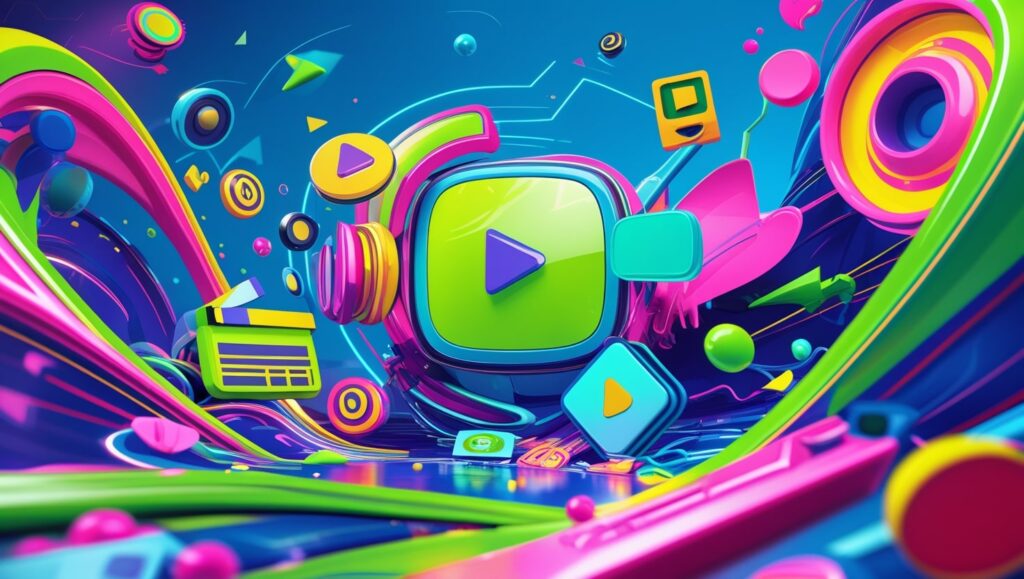
Motion draws the eye. Apps like Adobe Express and Canva Pro make it straightforward to make animated graphics. Examples of great Creative Graphic Design Ideas for animation are:
- Animation in logos.
- Videos that describe things with straightforward animations.
- Products can be displayed with movements between them.
Using motion graphics, small businesses can interact better with their audience on Instagram and TikTok.
13. Interactive Content
They get to play a role in the experience with interactive designs. A few creative graphic design ideas can be seen here:
- Quizzes that come with unique pictures or graphics.
- Timelines that let users interact.
- The presence of interactive graphics.
They amuse and manage to attract a larger audience to interact. They help the most in digital settings and when generating leads.
14. Developing flyers or posters through print.
Print media is not vanishing. Using flyers and posters is still a good option for local businesses. Updating your logo involves using Creative Graphic Design Ideas which can include
- Text that is bold and placed over images.
- Gradients in the colors used.
- Using wide open spaces and adding vivid, prominent highlights.
Various local print shops or sites like Vistaprint exist to create your ideas into printed documents without breaking the bank.
15. Design inspirational quotes for use online.
Quotes are popular topics for people to share. Use creative ways in graphic design so your quotes match the core values of your business. For example:
- A bakery distributing encouraging food messages.
- A fitness coach giving examples of encouraging quotes.
- A fashion brand giving advice on style.
Use bits of your brand colors and logos in the background so that people will share your quotes while also promoting your brand.
Frequently asked questions (FAQs)
- What tools should small business owners focus on for graphic design?
Among the tools, you can use Canva, Adobe Express, Figma, Visme and Piktochart without paying anything or only a small fee. Every one includes useful templates and features made for using Creative Graphic Design Ideas.
- How might I think of fresh and interesting design ideas?
Begin by looking into the competition and the people you want to sell to. Designers use mood boards, collections of colors and typography combinations for ideas. Base your creative graphic ideas on popular trends but use your company’s unique identity to create something distinctive.
- Can template designs work or do I need to create everything myself?
If you do not have design experience, using templates is a good thing to do. Personalize the emails with your brand’s colors, typefaces and logos to fit your brand. It is still possible to create many Creative Ideas with the help of a template.
- How regularly should I revise my website’s designs?
Update the designs in your store when a new season arrives or for major campaigns. Making regular changes ensures your brand looks up-to-date and interesting. Come up with fresh Creative Graphic Design Ideas every couple of months or whenever a new product/service is launched.
5. Do images have greater importance than written information?
There are many ways in which yes. Images are processed by the brain much more quickly than what is read. It means well-designed material can draw people in and message them right away. Having a mix of great visuals and established copy is the secret to effective Creative Graphic Design.
Conclusion
Smart, well-done design can help small owners make big changes to their brand and its marketing. If you apply these 15 Creative Graphic Design Ideas, your brand’s look will be better and you’ll also increase how much customers engage with and rely on your company.
Don’t worry if you’re not a professional, because you can still use these tips. Clever Graphic Design Ideas and suitable resources allow small business owners to enhance their company successfully.
Use this resource to help you and look into the Graphic Design concepts that are suitable for your business. Creating a logo for the first time, starting a fresh campaign or designing product packaging always allows you to think creatively.
Graphics Design
How to Create Stunning Social Media Graphics for Free

How to Create Stunning Social Media Graphics for Free
Social media graphics should be captivating and attention-grabbing to improve your visibility on the internet, whether you belong to a brand, work as an influencer or manage a small business. You won’t have to purchase high-level software or find a graphics designer to create beautiful visuals. Here, we will cover everything you should know about designing your social media graphics for free. On top of design strategies, you will also study tips and recommendations to create visuals that your followers will like.
The importance of using social media graphics.
You will see social media graphics posted on Facebook, Instagram, Twitter and LinkedIn among other platforms. They are a fast way to share information and ensure viewers or readers pay attention. Having quality graphics can encourage more people to interact with your business, recognize your brand and visit your site. Social media graphics are crucial for any marketing strategy because we process them almost 60,000 times faster than we process text.
Programs for Creating Social Media Graphics for Free
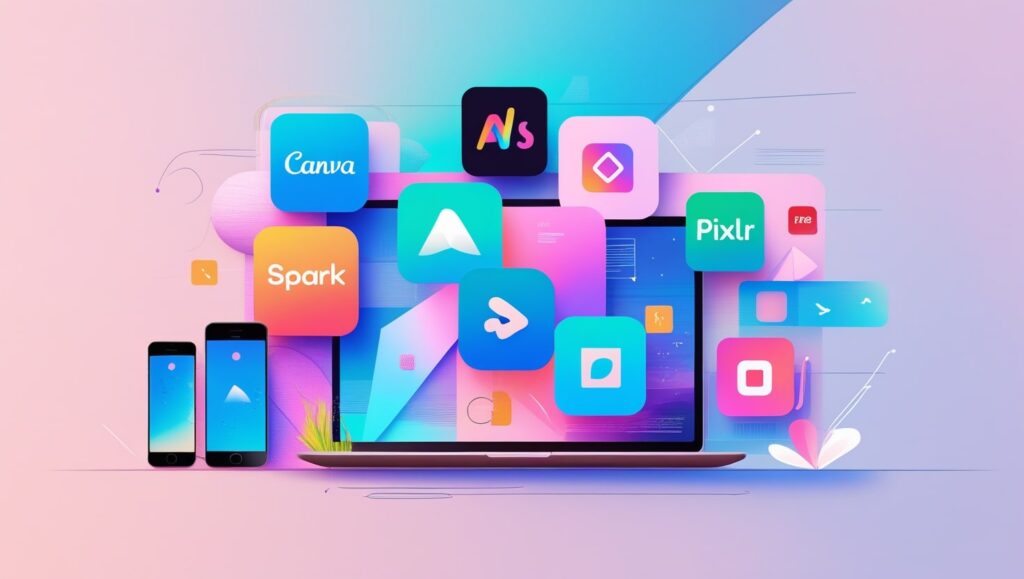
Simple tools are all you need to design pro-quality images for your social media. Here is a list of top-quality free tools you can try:
- With Canva, you can find different kinds of templates for most popular social media sites. Easy interactions with the interface.
- Crello (VistaCreate) enables you to use animated designs and create your own templates.
- Adobe Express – A free offer from Adobe that allows users to design graphics easily.
- With Pixlr, you can modify images and make various social media graphics instantly on the web.
- You can use GIMP instead of Photoshop, as it offers strong editing options and is available free of charge.
Such tools are free to use, so you can play around with templates, various fonts and different colors for your social media graphics posts until you achieve your desired look. You may access their libraries of photos and illustrations which saves your budget and keeps your posts interesting.
Understanding What You Need
Every social media graphics site might need a unique size of graphics:
Facebook Posts require images that are 1200 pixels wide and 630 pixels tall.
- For Instagram, set your photos to 1080 x 1080 pixels.
- Posts on Twitter should be 1024 x 512 pixels
- The optimal size for your LinkedIn Posts is 1200 x 628 pixels.
Choose the right size for your graphics to prevent your art from being distorted and looking unprofessional. When your graphics are similar on all your social media platforms, people are more likely to remember your brand. Since more people use mobile devices to access social media, it’s wise to set up your graphics for better viewing on them.
Guidelines for Creating Amazing Graphics for Social Media
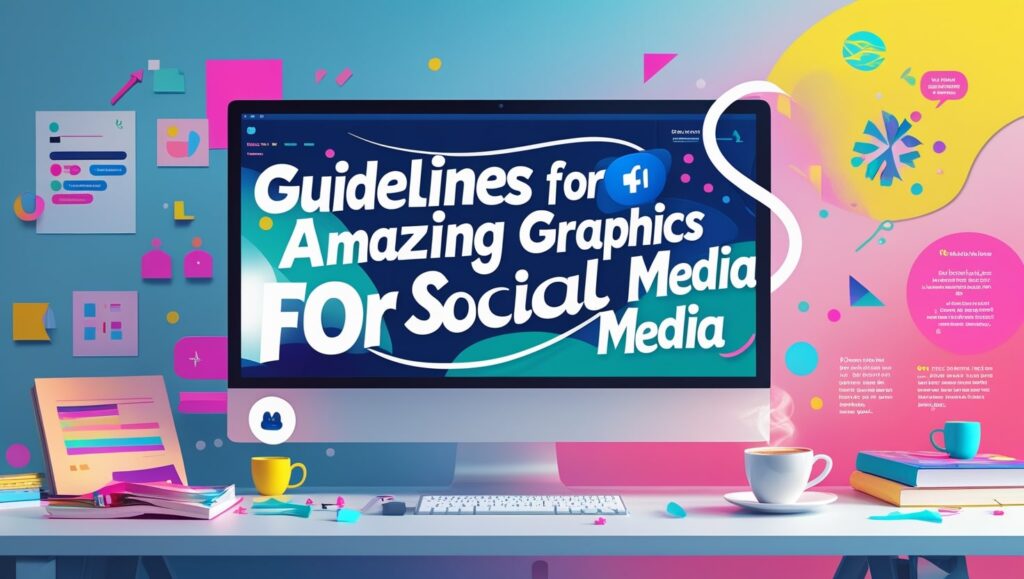
- Opt for high-quality images to make sure your graphics are eye-catching.
- Be sure to use the same colors, fonts and logo in all your graphics.
- Focus on keeping things simple; most people enjoy easy-to-use websites.
- Use fonts that are easy to read on mobile devices.
- Arrange Content Differently – Put content in various layouts and notice which one the audience interactes with most.
- Group the essential information with different font sizes or colors that stand out.
- Let your images communicate a message that is in line with your brand.
- Add Some Icons – Decorate your visuals with icons suitable for the event.
- Try using contrast and vibrant colors to make your content visible among other posts.
- Ensure Your Design is Aligned and Has Balanced Spaces for a Professional Look.
Good Methods for Social Media Graphics
- Put the most important text in the places where it will be most visible.
- Choose tones that are opposite of each other to emphasize the topics of your UI.
- Allow your design to look clean and comfortable by including unoccupied space.
- Use the same colors and fonts to ensure your brand is instantly recognizable.
- Always test your designs on social media to find out what’s most effective.
- Adapt the appearance of your graphics to different cultures if your target customers are from various countries.
- Display Your Logo or Watermark: Use them to make your brand more recognizable.
Tips for Designing for Mobile and Tablet
The design approach depends on the platform used. For example:
- Instagram: Prioritize bright photos and telling stories. Stars, extra attention to text and interactive stickers are excellent ways to get your followers more involved.
- On Facebook, ensure your messages are easy to read and that your headers are noticeable. Carousel posts and event banners are the best types to use on Instagram.
- Twitter: Make your post clear and in plain language. I find that bold statements and quotes are effective when used in graphics.
- On LinkedIn, ensure your profile is work-related and displays your brand. More people focus on infographics and professional announcements.
- On Pinterest, choose tall images that are well-suited for infographics and tutorials.
Using Graphics to Attract Customers
The objective of social media graphics is to get your audience interested. Bring attention to your posts by including motivating phrases, engaging features and attractive designs. Social media graphics that attract attention are generally shared, widening your brand’s audience. Try using polls, question stickers and headlines to help your viewers interact and comment.
Templates ensure your work always has the same style.
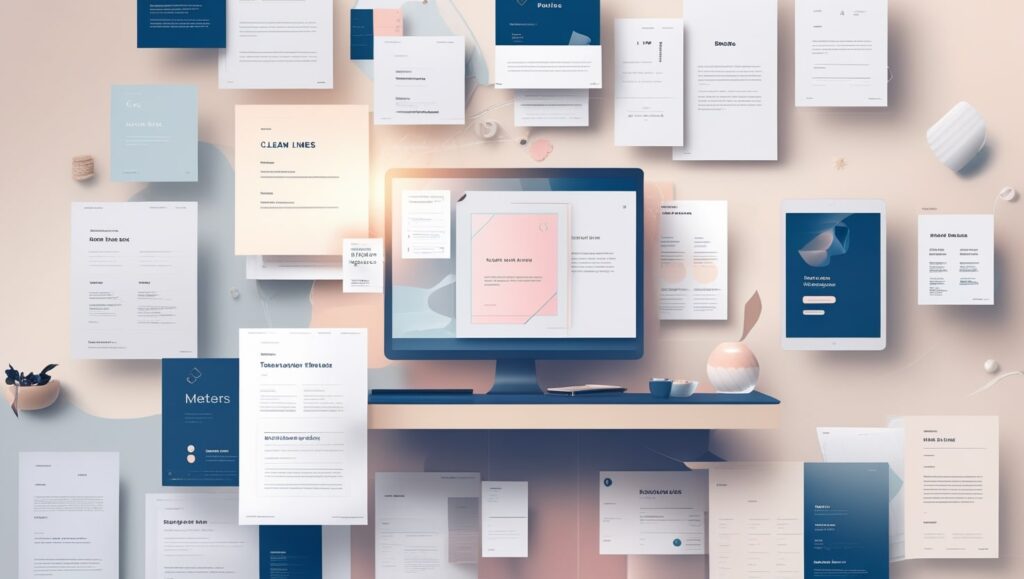
They are effective in helping a company maintain its brand identity. With platforms such as Canva and Crello, you can select one of their pre-made designs and edit it to reflect your colors and fonts. It saves you money and time and it also helps maintain a similar look for your graphics in every place.
Making graphics in bulk to improve efficiency.
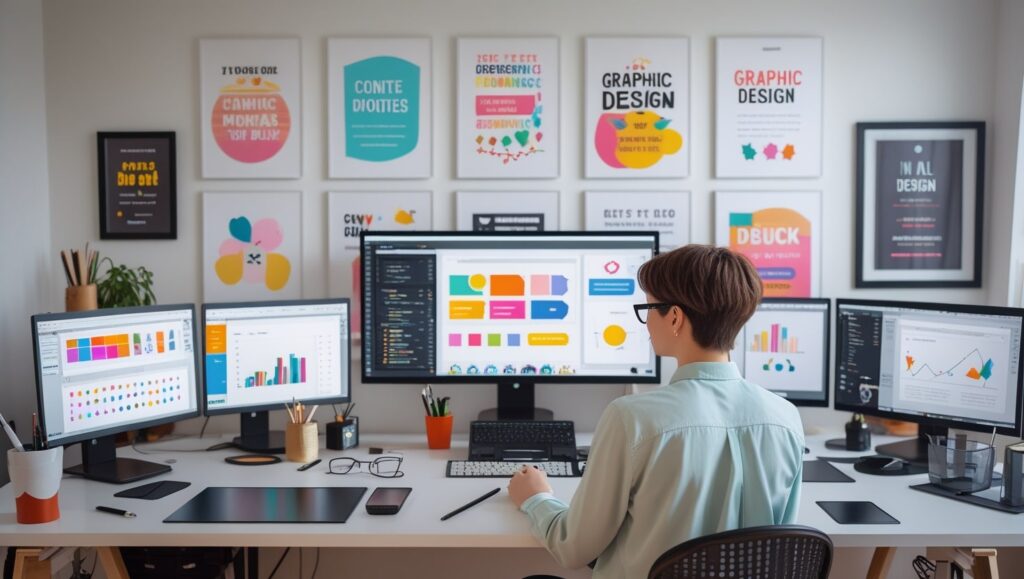
Batching your graphic designs can help you manage your social media accounts easily. If you schedule a time each week to design many graphics, you can stay consistent and avoid rushing at the last moment. Both Canva and Adobe Express enable you to reproduce designs and easily adjust them to use on various services, saving you time.
Important Tips on Making Social Media Graphics for Free
- It is possible to create impressive social media graphics without spending money?
Of course, you can use CSS within a LinkedIn account. You can create high-quality graphics for free with Canva, Crello (VistaCreate), Adobe Express, Pixlr and GIMP. They provide you with a range of templates, fonts and images to help you create your designs.
- What is a great program that I can use for free to make social media graphics?
Even though all the tools are effective, Canva becomes the top choice due to its user-friendliness, wide range of templates and broad design options. No matter how experienced you are, using Adobe Photoshop can help you excel in design.
- Should I make my social media graphics large or small?
How big a group should be on a platform varies from platform to platform.
- Facebook posts should be 1200 px wide and 630 px high.
- You should upload photos with a size of 1080 x 1080 pixels for Instagram.
- Your Twitter posts should be at most 1024 x 512 pixels.
- You should post photos on LinkedIn that are 1200 pixels wide and 628 pixels tall.
- The size of a Pinterest Pin is 1000 pixels wide by 1500 pixels high.
Ensure the size of your designs is correct so that there is no pixelation or parts of the image are strangely cropped.
- What strategies do I use to ensure my brand’s style is maintained on social media?
Make sure your logo, color palette and fonts appear the same on all your designs. With Canva, you can create a brand kit to ensure your designs always look consistent.
- Will I need to be a graphic designer to make social media graphics?
In fact, virtual tours aren’t limited to this situation. There are many online tools available for people who lack design skills. Thanks to predesigned templates, simple drag-and-drop options and tutorials, creating professional designs is quite simple.
- Can I schedule my social media images before I post?
Yes, Buffer, Hootsuite and Canva’s Content Planner provide a way to schedule your social media graphics for future publishing. This aids in creating a regular schedule and spares you time each day.
- How do I create social media graphics that people find engaging?
To encourage people to be more active:
- Include pictures that are eye-catching and clear
- In addition, add a call-to-action (CTA) message.
- Try using stickers that get people involved or polls.
- Design infographics that can be shared.
- Utilize stylish lettering and attractive article headings.
- Should I adapt my graphics for every game console and PC?
All the platforms offer different suggestions for image and design sizes. Every time you change your graphics for a different platform, they will look organized and professional.
- How many new graphics should I publish on social media every day?
It is best to publish around 3 to 5 times a week, unless your marketing strategy calls for something else. If you create your designs in batches, it will save you time and help you stick to your style.
- How will I determine the effectiveness of my graphics on social media?
Your graphics can be evaluated by watching the following trends:
- Measurement of likes, shares and comments
- Number of people clicking on the link if it opens a website
- These terms relate to how many times an ad is served and seen.
- Conversions are important aspects of a marketing campaign.
Metrics such as these can be evaluated with analytics tools from Facebook, Instagram, Hootsuite and Buffer.
Graphics Design
Best Laptops for Graphic Designers – 2025 Buying Guide

Best Laptops for Graphic Designers – 2025 Buying Guide
Though talent is a must, coming out on top in the world of graphic design requires the ability to use the right devices to enable creative vision. In the year 2025, there is unheard of demand of laptops geared specifically towards the needs of graphic designers, by the technology sector. The fact that your career in graphic design is mature or you’re still starting, can affect your efficiency and output greatly if you have the best laptop for graphic design.
Throughout this guide, we are going to drill down on the best laptops for graphic designers in 2025. With intense research on the specs, efficiency, build and pricing of the laptops, you will be able to determine the best fit for your graphic design workflow.
Choosing the best laptop is important for achieving most proficiency as a graphic designer.

Graphic design tasks are resource-intensive. Creating workflows that incorporate Adobe Photoshop, Illustrator, CorelDRAW and 3D designs requires high speed processors, bright images and ample RAM to perform best. Laptops for graphic designers a properly chosen laptop allows you to do complex projects without interruption, and allows you to have uninterrupted creativity.
Having the right laptop means:
- Faster rendering times
- Smooth multitasking with heavy software
- Vivid and clear visuals for better control of color.
- Enhanced flexibility and mobility, as well as, increased battery utilization time for mobile design work.
Top features that can be considered to choose laptops to design Graphic Designers.

It’s important to understand which key strengths are the most valuable before reducing your options…<<
- Processor (CPU): The heart of any laptop. In graphic designing, you should choose a processor, which is as strong as Intel i7 or i9 or AMD Ryzen 7 or 9.
- Graphics Card (GPU): A graphics card like the NVIDIA GeForce RTX or AMD Radeon will ensure optimal results and a sleek rendering of 3D designs work.
- RAM: For most graphic design jobs, a minimum of 16gb is recommended but 32gb is highly recommended for multitasking and efficiency with large projects.
- Storage (SSD): Choosing 512GB or greater of fast SSD storage substantially reduces boot times and offers better organization of files.
- Display Quality: laptops for graphic designers screen should support at least 1920×1080 resolution, showing true colours (100% sRGB), and bright images.
- Portability and Battery Life: Select a light and energy efficient machine that will enable designers to work comfortably, off desk.
- Connectivity Options: Ensure that it is compatible with relevant peripherals through ports like USB-C, HDMI and even a built-in SD card reader.
Top Laptops for Graphic Designers in 2025
Below, we’ve curated a list of the best Laptops for Graphic Designers this year, covering various budgets and performance needs:
- Apple MacBook Pro 16″ (2025)
- M3 Max Chip with 16-core GPU
- 32GB RAM, 1TB SSD
- Liquid Retina XDR display with ProMotion
- Perfect for color accuracy and heavy rendering tasks
- Dell XPS 17 (2025)
- Intel i9 14th Gen Processor
- NVIDIA RTX 4070 GPU
- 32GB RAM, 1TB SSD
- InfinityEdge 4K display for crisp visuals
- HP Spectre x360 (2025)
- Intel i7 14th Gen Processor
- Intel Iris Xe Graphics
- 16GB RAM, 512GB SSD
- 2-in-1 convertible design with a 4K OLED display
- Asus ProArt StudioBook 16
- AMD Ryzen 9 7945HX
- NVIDIA GeForce RTX 4080
- 32GB RAM, 1TB SSD
- 16-inch 3.2K OLED display with 100% DCI-P3
- Microsoft Surface Laptop Studio 2
- Intel i7 14th Gen Processor
- NVIDIA GeForce RTX 4060
- 32GB RAM, 1TB SSD
- Dynamic woven hinge design and PixelSense display
- Razer Blade 18 (2025)
- Intel i9 14th Gen Processor
- NVIDIA GeForce RTX 4090
- 64GB RAM, 2TB SSD
- 18-inch QHD+ display with 240Hz refresh rate
- Lenovo ThinkPad X1 Extreme Gen 5
- Intel i9 14th Gen Processor
- NVIDIA RTX 4080
- 32GB RAM, 1TB SSD
- 4K display with Dolby Vision HDR
- Acer ConceptD 7 Ezel
- Intel i7 14th Gen Processor
- NVIDIA GeForce RTX 4070
- 32GB RAM, 1TB SSD
- Convertible 4K display with touch support
- MSI Creator Z16
- Intel i7 14th Gen Processor
- NVIDIA GeForce RTX 4060
- 32GB RAM, 1TB SSD
- 16-inch QHD+ display
- LG Gram 17 (2025)
- Intel i7 14th Gen Processor
- Intel Iris Xe Graphics
- 16GB RAM, 1TB SSD
- Ultra-lightweight with a 17-inch WQXGA display
Overview top laptops for graphic designers professionals’
We evaluated each of them with respect to processing capability, prevalence of visuals, battery efficiency, and carrying convenience. Through mentioning these comparisons you’ll manage to find the best Laptops for Graphic Designers in 2025 based on your personal needs.
Frequently Asked Questions about Laptops that are for Graphic Designers
1.What criteria around the specifications should I be looking for if I want to do graphic design?
- Choose a laptop with a powerful CPU, skills to run a dedicated GPU, 16GB RAM or more, and the SSD for no interruption workflow.
2.Do graphic designers need to use graphics processing units?
- Yes, it enables project file generations with a faster rate and has improved support for high resolution uses.
3.A suggested amount of RAM for graphics software is at least 16GB, but 32GB is preferable to run multiple applications at once.
- Laptops for graphic designers at least 16 GB RAM is aggravated but 32GB offers great multiplication functions.
4.Is graphic design a stronger suit for MacBooks than for Windows laptops?
- Both are excellent; When compared by software ability, display and color accuracy it is the MacBook which comes out on top while the software is the one known in the market for greater availability in models.
5.For best design work, the recommended screen size is between 15 to 17 inches.
- Best working conditions laptops for graphic designers are displays between 15–17 inches with high resolution.
-
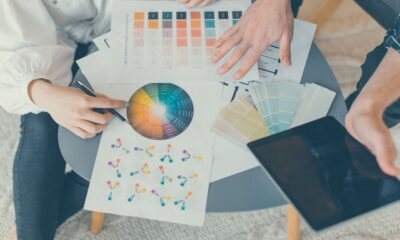
 Graphics Design1 year ago
Graphics Design1 year ago7.Exploring the Importance of Color Theory Charts
-

 Graphics Design9 months ago
Graphics Design9 months ago10 Stunning Gradient Design Trends You Need to Know in 2024
-
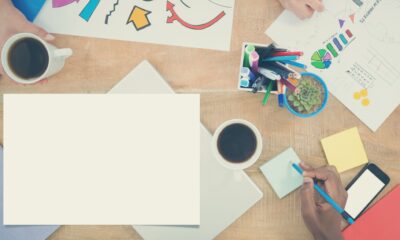
 Graphics Design1 year ago
Graphics Design1 year ago15.The Importance of Effective Flyer Design in Marketing
-
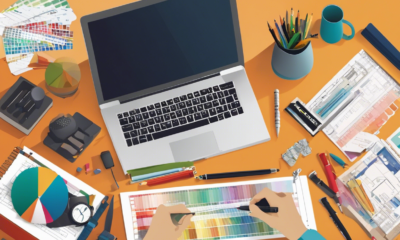
 Graphics Design1 year ago
Graphics Design1 year ago14.Mastering the Art of Print Design: Tips and Tricks
-
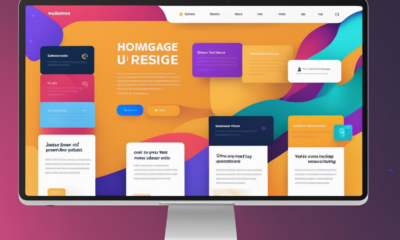
 Graphics Design1 year ago
Graphics Design1 year ago10.The Latest Trends in Web Design and Development
-
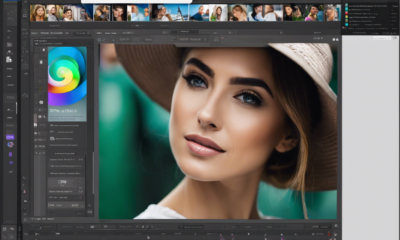
 Graphics Design1 year ago
Graphics Design1 year ago13.Exploring the Latest Trends in Photo Editing Software
-

 Graphics Design1 year ago
Graphics Design1 year ago29.Retro Design Is Making a Comeback in Modern Spaces
-
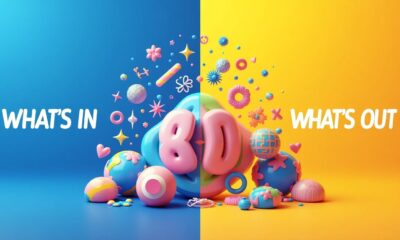
 Graphics Design4 months ago
Graphics Design4 months ago2025 Logo Design Trends: What’s In, What’s Out?





Daniel Phebus
October 26, 2024 at 8:34 am
Hi, Neat post. There is a problem with your web site in internet explorer, would check this… IE still is the market leader and a huge portion of people will miss your fantastic writing due to this problem.
Ezippi
November 7, 2024 at 7:20 am
Ezippi naturally like your web site however you need to take a look at the spelling on several of your posts. A number of them are rife with spelling problems and I find it very bothersome to tell the truth on the other hand I will surely come again again.
double scorpio
November 13, 2024 at 12:39 am
I really enjoy looking through on this site, it contains superb blog posts. “The living is a species of the dead and not a very attractive one.” by Friedrich Wilhelm Nietzsche.